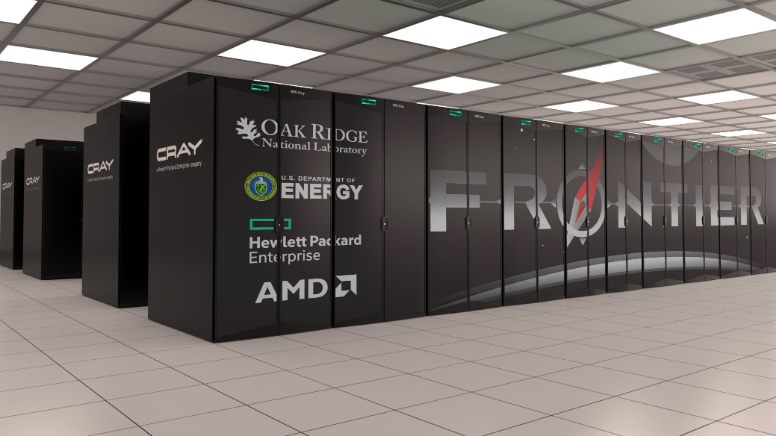 INFRA
INFRA
 INFRA
INFRA
 INFRA
INFRA
The Top500 computing organization has once again named Frontier as the world’s fastest supercomputer.
Frontier is a 9,472-server system installed at the Oak Ridge National Laboratory. Top500 named it as the world’s fastest high-performance computing system in the latest edition of its namesake supercomputer ranking, which was published Monday. The results were released against the backdrop of the Supercomputing 2023 industry event taking place this week in Denver.
Top500 compares supercomputers’ performance using a benchmark tool called HPL. The tool evaluates a machine’s speed by having it solve systems of linear equations and then measuring how fast it completed the task. Calculations are carried out with numbers stored in the float64 data format, which is used to represent long fractions.
Frontier first nabbed the No. 1 spot in the Top500 ranking last June. At the time, the supercomputer demonstrated performance of 1.102 petaflops, which equals about 1.1 million trillion calculations per second. Its speed has since increased to 1.194 exaflops.
Frontier comprises more than 9,400 servers deployed in 74 liquid-cooled cabinets. Each server features five Advanced Micro Devices Inc. compute modules: one central processing unit and four MI250x accelerators. Each MI250x, in turn, includes two graphics cards.
Frontier is notable not only for setting supercomputing performance records but also its power efficiency. The system achieved 1.194 exaflops of performance in Top500’s benchmark test using 24.69 megawatts of electricity. That’s about two watts less than the amount of power used by the second most powerful system on the list, the Argonne National Laboratory’s recently deployed Aurora system.
The installation of Aurora’s hardware components was completed earlier this year, but it’s not yet fully operational. The 585.34 petaflops of performance the system demonstrated in Top500’s test represents about a quarter of its expected compute capacity. Once all its components are up and running, Aurora will deliver more than two exaflops of processing power.
Like Frontier, the current Top500 record holder, Aurora was built by Hewlett Packard Enterprise Co. But it features processors from Intel Corp. rather than AMD. Aurora’s 10,000-plus servers house 21,000 CPUs and 60,000 GPUs, about half of which were operational when the latest Top500 speed test was conducted.
The No. 3 spot on the ranking is held by a newly detailed Microsoft Corp. supercomputer called Eagle. The system, which is hosted in the company’s Azure cloud platform, demonstrated a speed of 561.2 petaflops. It’s powered by Intel CPUs and Nvidia Corp.’s H100 graphics cards.
Before Eagle came online, the No. 3 spot in the Top500 ranking held by a system called Fugaku. Operated by the Riken Center for Computational Science in Japan, Fugaku is the only top-five supercomputer with CPUs based on Arm plc processor blueprints. The system features no fewer than 158,976 Arm-based processors spread across approximately 400 server racks.
The world’s fifth fastest supercomputer after Frontier, Aurora, Eagle and Aurora is the LUMI system in Kajaani, Finland. It too was built by HPE. LUMI is powered by thousands of 64-core AMD CPUs and GPUs from the chipmaker’s Radeon Instinct graphics card series.
The latest Top500 ranking marks a notable milestone for AMD. Some 140 of the 500 supercomputers in the ranking feature the chipmaker’s CPUs, which represents a 39% increase from the same time a year earlier. Soon, yet another AMD-powered system will join the list: The U.S. Energy Department’s upcoming El Capitan supercomputer is expected to deliver more than 2 exaflops of performance when it comes online next year.
Support our mission to keep content open and free by engaging with theCUBE community. Join theCUBE’s Alumni Trust Network, where technology leaders connect, share intelligence and create opportunities.
Founded by tech visionaries John Furrier and Dave Vellante, SiliconANGLE Media has built a dynamic ecosystem of industry-leading digital media brands that reach 15+ million elite tech professionals. Our new proprietary theCUBE AI Video Cloud is breaking ground in audience interaction, leveraging theCUBEai.com neural network to help technology companies make data-driven decisions and stay at the forefront of industry conversations.